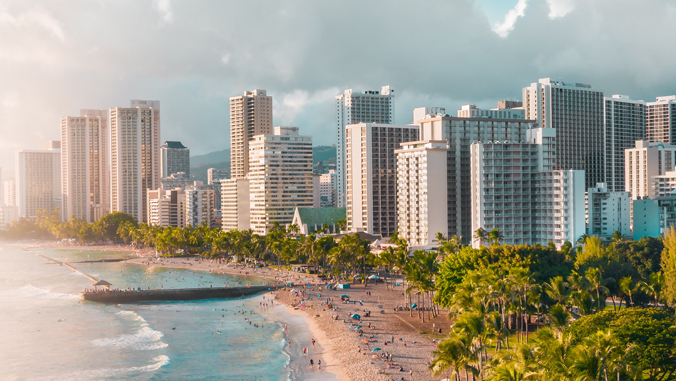
Despite Japan being added to Hawaiʻi’s pre-travel COVID-19 testing program, only a small number of tourists from Japan are expected in the short-term based on current regulations, according to the University of Hawaiʻi Economic Research Organization (UHERO). That’s because residents must quarantine for 14 days upon returning to Japan, and the tradeoff may not be worth a short vacation with the possibility of potential travel disruptions.
However, UHERO experts said that may open the door for specific groups of Japanese visitors to travel to Hawaiʻi, including retired adults who may better cope with a 14-day travel quarantine upon returning to Japan. Adults over the age of 60 made up 21.4% of 2019 visitors to Hawaiʻi from Japan, or about 337,000 people. That population could potentially increase as they otherwise would have visited destinations that remain closed or are perceived as dangerous places to visit, due to COVID-19. The number, however, is likely to be tempered based on the risk of being infected while traveling.
UHERO said more visitors from Japan will likely visit if Hawaiʻi’s daily case count declines, if the Japan government lifts its 14-day quarantine on residents returning from Hawaiʻi with an approved COVID-19 test and when a vaccine becomes available.
Risk of Japan visitors on Hawaiʻi residents
The risk of visitors from Japan spreading COVID-19 in Hawaiʻi is extremely low, according to UHERO. Latest models from the University of Washington predicted that 19.8 people per 100,000 were infected with COVID-19 in Japan on October 23, compared with 264.09 people per 100,000 in California. Considering the population of likely travelers, the reliability of approved COVID-19 tests and the high mask use rate by Japan visitors, they will pose an extremely small risk of infecting Hawaiʻi residents, U.S. tourists or visitor industry workers.
Based on mask-wearing practices, UHERO estimated that the likelihood of a tourist becoming infected with COVID-19 in Hawaiʻi and then bringing it back to Japan is extremely rare. One way to ensure that they will be less likely to contract the virus is through a statewide government mandate for all residents and visitors to wear masks when outside their homes or hotel rooms.
Future outlook
UHERO emphasized that the key to restarting tourism is to reduce the transmission of COVID-19 in Hawaiʻi. This includes no group gatherings for upcoming holidays such as Halloween, Thanksgiving, Christmas and New Year’s. Projections show that if Hawaiʻi residents increased mask wearing from the current 76% to 95% outside of their homes, there would be 5,640 infected people in the state on February 1, 2021, compared with 11,865.
UHERO is housed in the College of Social Sciences.

